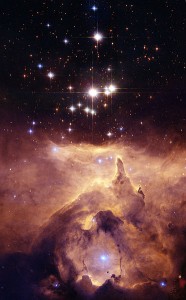
The Summerhays lectures have striven to bring to light the commonalities that science and faith share; even though they are not well known in BYU community, the lectures have taken place at BYU for 10 years.
The compatibility of science and faith can be a touchy subject, but Daniel C. Peterson, a BYU professor of Arabic, will be speaking on this subject Thursday, Sept. 19, at 7 p.m. in the Joseph Smith Building, room 140.
“I think it’s exciting,” Peterson said. “These are really big issues that concern everybody.”
A BYU professor of astronomy, J. Ward Moody, oversees the Summerhays lectures, and he comments on the central purpose behind these talks. “The spirit of these lectures is to find harmony between science and religion,” he said.
Former Summerhays speaker and BYU professor of law John W. Welch specifically strove to create harmony between Mormonism and science in his lecture in 2011.
“In many ways Mormonism is science friendly and science is Mormon friendly,” Welch said.
Although these lectures have been an annual event for almost 10 years, their origin is largely unknown at BYU. As Moody expounded the focus and purpose behind these lectures he did so by sharing how they started with the family that funded the creation of the BYU planetarium.
“The original planetarium was the Summerhays’ Planetarium, and when we rebuilt it and named it after Royden G. Derrick we talked with Bryan Summerhays, Hyrum’s son, and asked him what kind of involvement he wanted to have with astronomy, and he suggest that we have a lecture series in which we explored science and religion.”
Ten years later these lectures continue with Peterson as their next speaker; he plans to help his listeners see the spiritual effects science has already had on individuals.
“There are scientists that have actually come to believe in God through their impressions in science, who’ve just been impressed by evidence of orderliness and non-randomness in nature, and that has either brought them to faith or strengthened their faith,” Peterson said. “They certainly see it as consistent with ‘belief.'”
As these lectures are shared and recorded for future audiences, speakers like Welch can only hope their listeners are changed in some way.
“I hope it influenced those that were there,” Welch said. “It’s hard to ever know where ideas will go and who they will influence and what will stand out down the road in a student’s experience. It’s the overall experience that has an impact.”




